Back in January, Natasha covered Juro’s Series B round, which added $23 million to its coffers. Juro aims to put an end to contract negotiation madness, moving the workflows out of Microsoft Word and a handful of other subpar tools to an all-in-one, web-based platform for contract negotiation-to-signature workflow. It seems like a very good idea. The deck worked; it helped Juro raise a fine stack of dollars. But is its deck any good? Let’s take a closer look.
We’re looking for more unique pitch decks to tear down, so if you want to submit your own, here’s how you can do that.
Slides in this deck
The company used a 15-slide deck, which it shared with TechCrunch, making only some light redactions. All the slides are there, but the company blurred out part of its future road map and the actual numbers for the financials.
- Cover slide
- “It takes ~5 tools to process just one contract” — problem slide
- “Initiating contracts in MS Word files compounds the pain” — problem slide
- “We’re making contracts browser-native” — solution slide
- “Companies are switching to Juro’s browser-native format” — traction slide
- “ARR is at $XXm+, growing predictably and sustainably” — financial traction slide
- “We‘re the only all-in-one system adopted by legal teams” — competition slide
- “We have a repeatable GTM engine, driven by inbound” — customer acquisition slide
- “While churn is trending strongly downwards” — retention slide
- “Our community of champions compounds growth” — customer slide
- “Helping us grow ARR with a land/expand motion” — go-to-market/market-expansion slide
- “We have an experienced team on board and engaged” — team slide
- “With a track record of capital efficiency” — financial highlight and investment partners slide
- “And a wider aim to become the default way to agree terms” — product road map slide
- Closing slide
Three things to love
There are a lot of really good things about the Juro deck, but the clarity of its story is a particular highlight.
Yup, that’s a problem all right
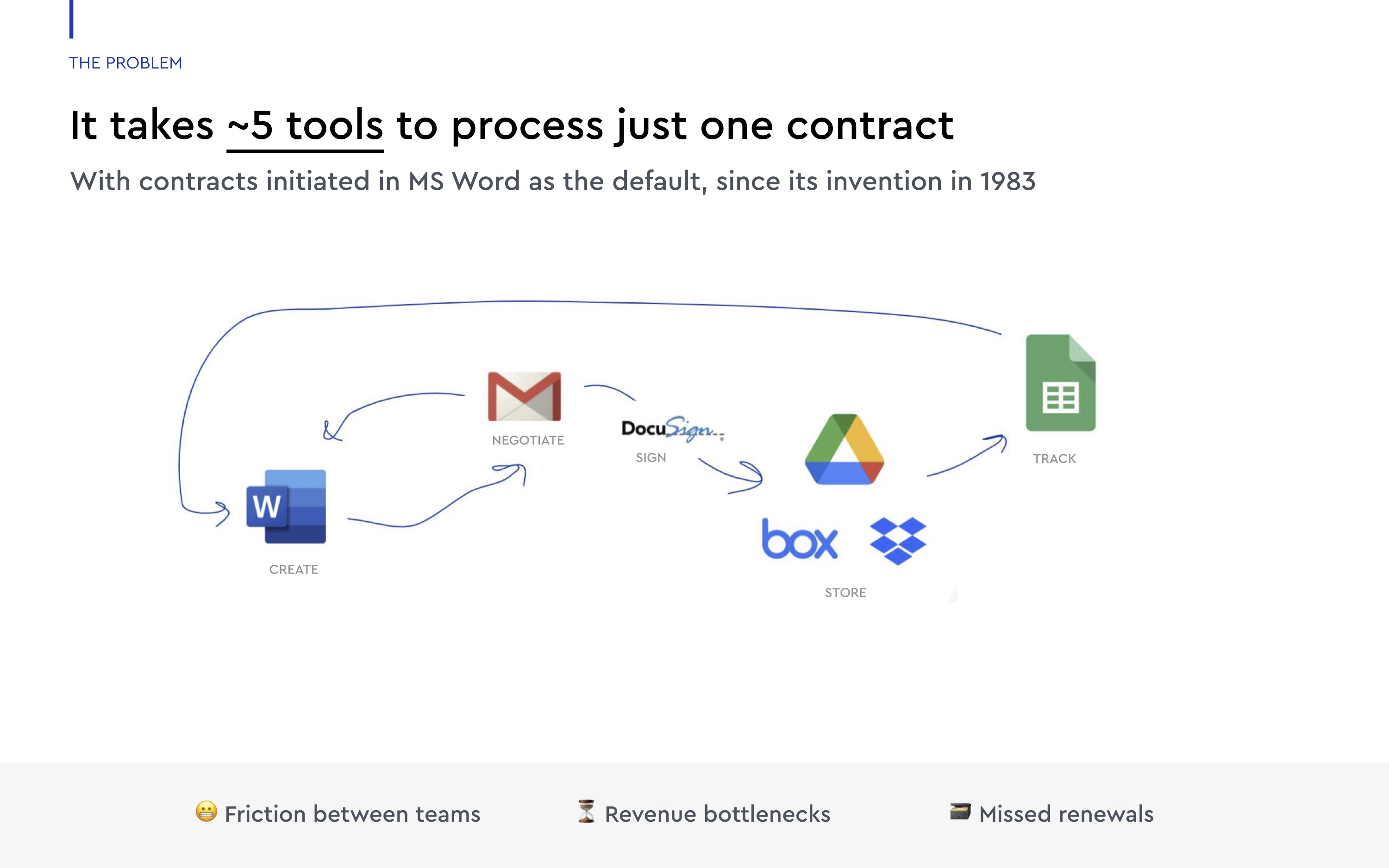
Anyone who’s had to deal with contracts, especially contracts that are custom or at least flexible to every customer, has experienced this problem in one form or another. This shows up for everyone who does large B2B or corporate deals. If you’re negotiating with someone bigger than you, it’s likely that their in-house legal team has thoughts about your contracts and that you won’t be able to use your lovingly crafted boilerplate contracts the way you had hoped.
For startups, this shows up in due diligence from time to time. You both need to have contracts with all your customers and suppliers and be able to locate and show the signed versions of them in the due diligence process if prompted. If your contracts live in your email or (maybe) in a shared folder (somewhere, hopefully), this can turn into a stressful nightmare.
The extra-cool quirk here is that most VC deals fall into this category; the term sheets are often pretty standard, but by the time the investment documents are complete, there’s a bunch of custom language that can sneak into each contract, varying from deal to deal. The upshot is that this company would probably have been a pretty easy sell to a lot of VCs that are looking at this deck: While the company isn’t specifically for the startup and VC ecosystem, Juro is, at least partially, solving a problem every VC has experienced at one time or another.
If your company does something that VCs are very likely to be familiar with, you can use that to your advantage. It speeds up the “this is why this is useful” narrative significantly. What a great perk!
Juuust enough product to make sense
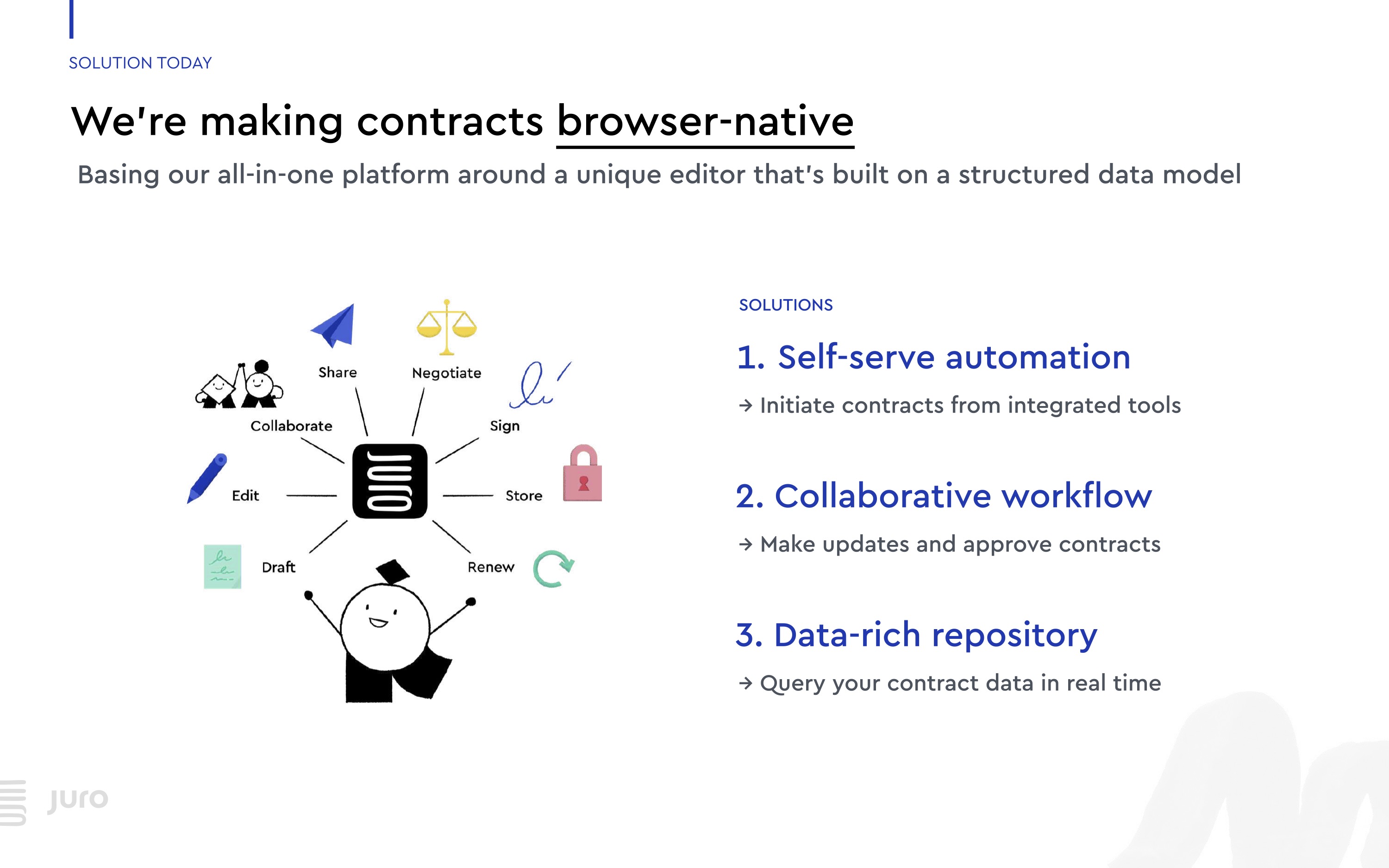
A lot of startups fall for the temptation to spend way too much time talking about their product. The product is important, of course, but rarely as important as founders think it is. This is a Series B deck, and Juro tells the right story here: If you have a lot of customers (and, as we will note in just a moment, Juro does), you don’t have to spend a lot of time on your product. The customers love it, they’re giving you money and they are staying. For Series B, we are talking about growth. Yes, the product has to be good enough to not actively scare customers away, but if you can sign them up and keep them around, you’re on the right trail, at least.
In this slide, Juro shares just enough detail so investors can get a high-level overview of what the product is and what the benefits are. Very well done, and it keeps things at a high enough level to make it all pretty easy to understand. Well done!
As a startup, what you can learn from this slide is to not get bogged down in the details. Keep it as simple as you can. With my pitch coaching clients, I sometimes challenge them to tell the entire story without mentioning the product once. A little extreme, of course, but it helps strengthen every other part of the story sufficiently to the point that once you add product back in, it takes on the appropriate amount of time and energy in a pitch.
Traction, traction, traction
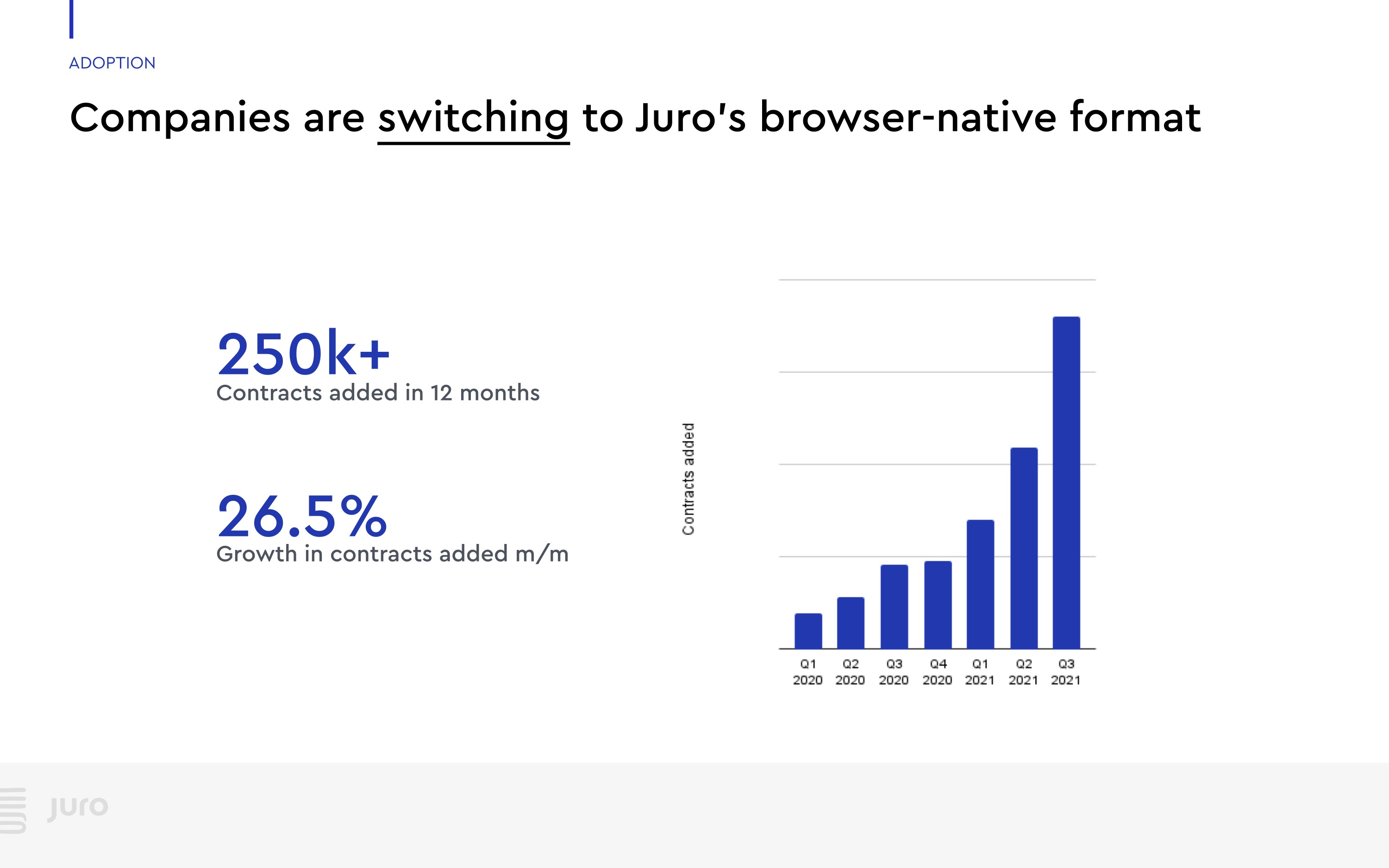
Traction is the single most important slide you will have in your pitch deck. If you have it, lead with it as early as you can. Well, we’ve made it to slide five in Juro’s pitch deck and we’ve already talked about the slides that preceded it. Realistically, this is the earliest the company could talk about how well it is doing. And goodness, is it ever — that’s as exponential a graph as you will see for any startup, and if Juro has “number of contracts signed” as its most important KPI, this graph is exceptional.
You’ll have noticed the “if” in the above sentence. As an investor, I like this graph. I like that the company is expanding rapidly. But there’s a quirk here: According to its pricing page, the company doesn’t directly make more money if it deals with more contracts. Of course, the two will be strongly related, but I’d have loved to see a more direct traction metric here. ARR, perhaps. Number of paying customers. Leading with a beautiful graph for a secondary KPI always comes across as a little suspect. I’m letting them get away with it here because slides 6 and 7 cover the company’s ARR growth, which is the real metric numbers-driven VCs will care about.
The lesson? Be careful which metrics you lead with. Some are important internally but less important to investors. Some will be valuable to certain aspects of the business (time to customer support ticket closure and system uptime, for example, are crucial to customer service and technical operations teams), but it seems curious to see them show up in pitch decks.
In the rest of this teardown, we’ll take a look at three things Juro could have improved or done differently, along with its full pitch deck!
Three things that could be improved
You know, I’m having a really hard time finding serious flaws in this deck — it is one of the best that has come across my virtual desk, and I’m hard pressed to find teachable moments. I’m completely unsurprised that the company was successful in raising its $23 million round.
I’m a firm believer that good enough is good enough; you can easily spend weeks and months polishing a deck and still be out of reach of perfection. To be super clear: This deck is definitely good enough. Still, it wouldn’t be a teardown if we didn’t do some tearing down, so here are a few details that could have been tidied up.
Fess up about the GTM, folks…
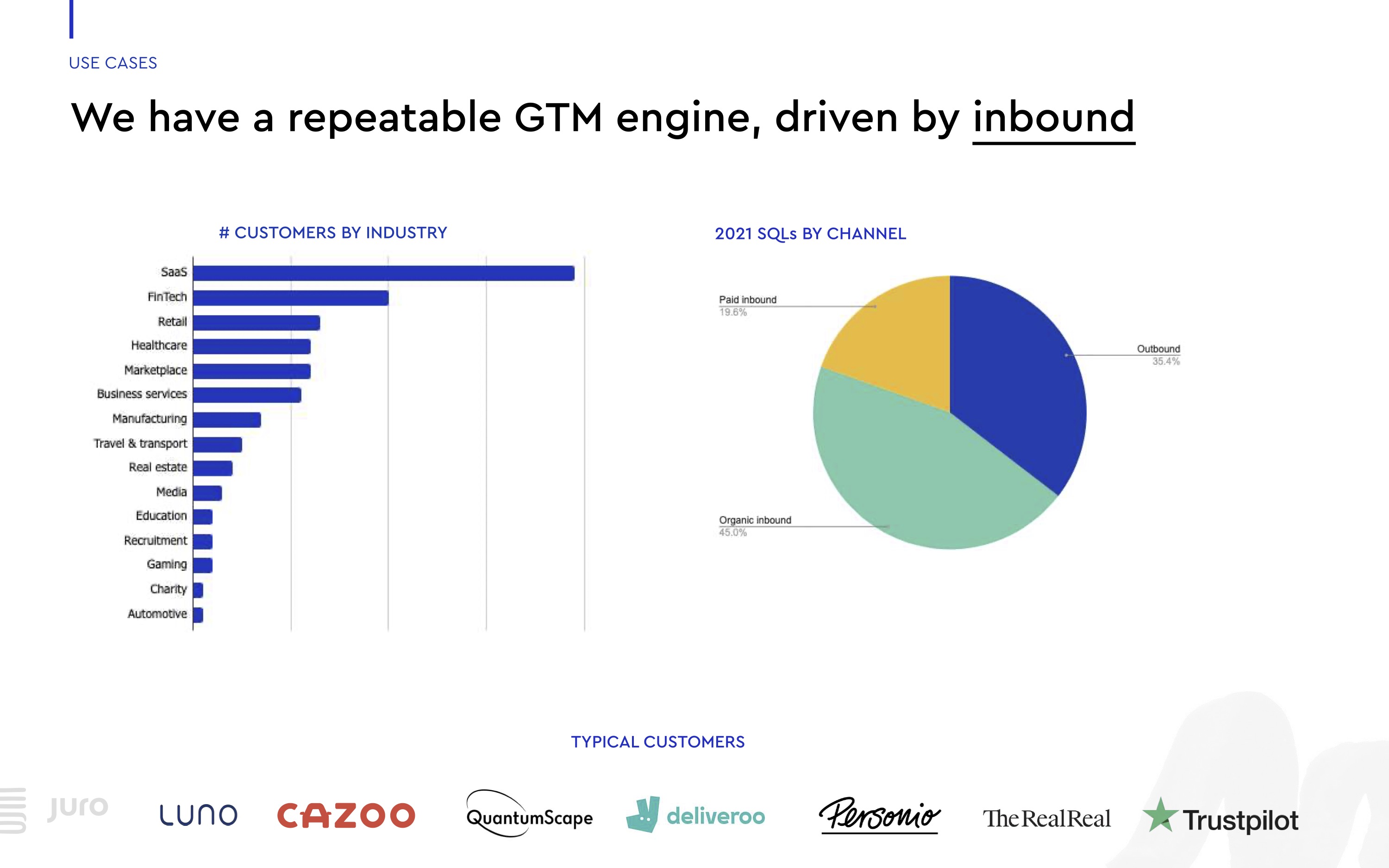
If you’re going to be talking about customer acquisition, talk about customer acquisition. This graph is impressive in one way: It shows that the company has deep details about its customer segments and tracks how it is filling its top of funnel. Both are great, and I’d expect that for a company at the Series B stage.
What is glaring in its omission, however, is whether Juro has a machine for cranking out growth. Organic inbound is fantastic, and it seems like a chunk is coming from outbound (presumably a sales organization) and paid inbound (I assume this is marketing or advertising activity). All lovely, but it doesn’t state the cost of acquiring a new customer on average. It should be easy enough to calculate: Take all your advertising and sales spend in a period and divide it by the number (or value) of new customers. Now you have a ratio that you can use to further expand and grow. For a company that specifically says it is proud of its capital efficiency (see Slide 13), it seems curious not to include that.
Overall, the impression I get is that while these numbers are impressive, they are vanity metrics. The company should have access to more hard-hitting metrics here: What is the blended customer acquisition cost (CAC) and what’s the expected lifetime value per customer? From there, you can paint a much better argument for “Give us $23 million, and we will grow this thing to the moon.”
So, whatcha gonna do with the money?
If I were to take an educated guess, I’d believe that a Series B company raising $20-ish million would spend about a third on marketing, a third on product development and a third on overall growth. Perhaps that is so painfully obvious that the company didn’t feel like it needed to include it, but I think it’s a bit of an oversight.
If you’re raising that kind of money, you’d best have a good plan for how to spend it. You 100% know the investors are going to ask. You may as well drop it in the deck. I would cover it in three slides: a high-level “ask” slide that explains how much you’re raising and what you’re going to do with the money, a detailed 18-month operating plan that shows what the specific metrics and milestones you’re working toward and a five-year financial overview (probably in the appendix or as a separate document) showing that you’re venture scale, even as you’re continuing to grow. Because if you aren’t, well, what are we even doing at this meeting?
Mature. Too mature?
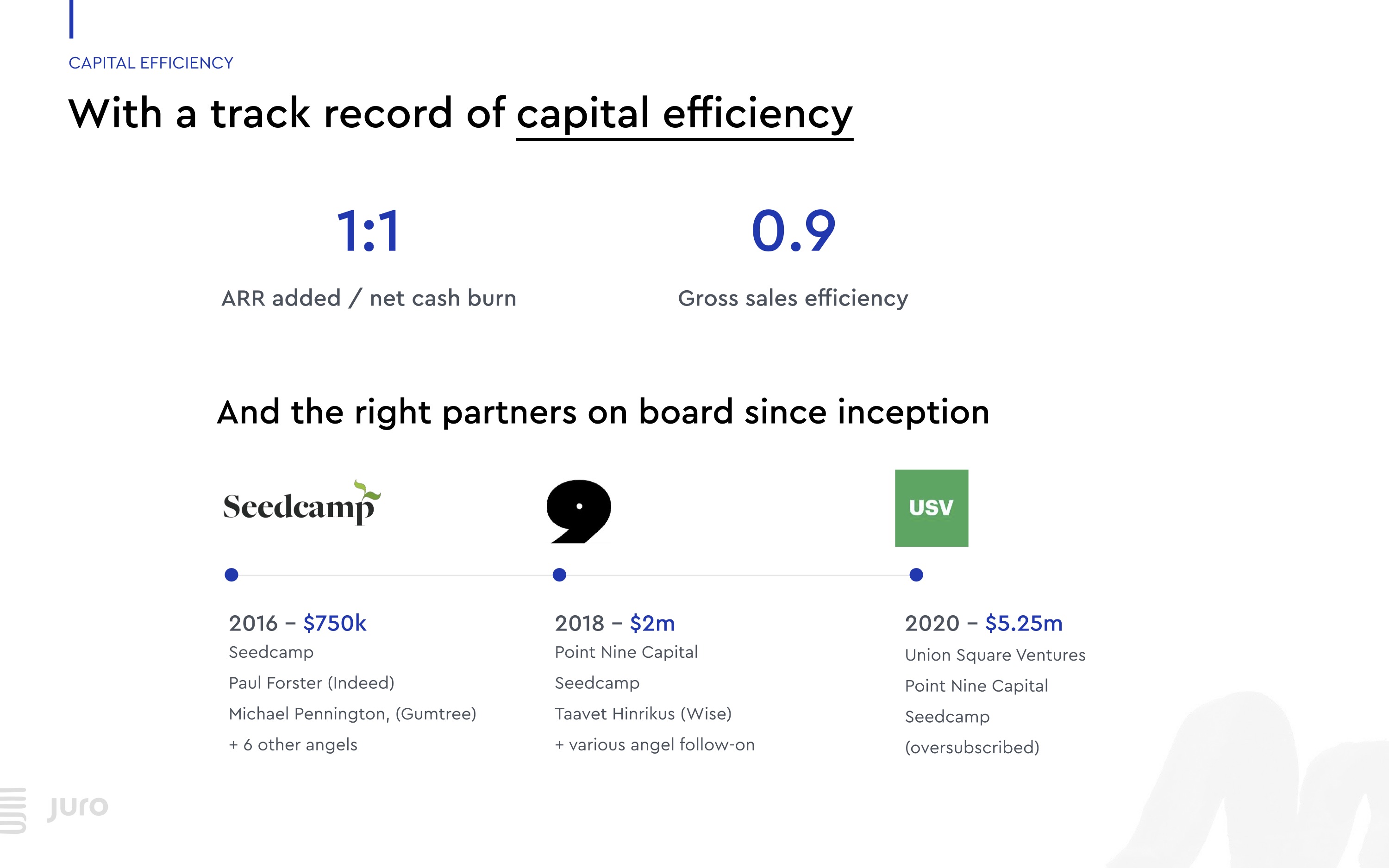
Look, I told you I was scraping the barrel on things to talk about on this deck. This one turned out to be a bit of a head-scratcher for me. I don’t want to pour too many value judgments on it, but here’s why it seems unclear as to whether this is good:
Pro: In a tumultuous market, being capital efficient is helpful, and it means that the company has the muscle memory to go into survivor mode if it needs to. That could be a good thing.
Con: Where my mind immediately went when I saw this slide was whether all the value was already wrung out of this company. Perhaps I’d have stuck it in the appendix instead and talked about it as part of a greater financial conversation. The issue I have is that highlighting this in a pitch deck makes me think that the company isn’t ready to continue on its path of hypergrowth, and I would probably want to dig into this with the founders a little.
Overall, I am hearing a lot of VCs talk about capital efficiency right now — but remember that this deck is now almost a year old. A year ago, this amount of focus on capital efficiency would come across as a lack of aggression. Perhaps it is because this is a U.K.-based startup, and Silicon Valley startups tend to be more bullish. Or maybe Juro saw this current mess coming and decided to get out ahead of it. Either way, this was the slide that seemed least clearly aligned with what the next stage of growth looks like. Combining its presence with the absence of a clear growth plan, operating plan and its fuzziness around how it is going to acquire customers and grow at scale gave me at least a few yellow flags to dig deeper into.
The full pitch deck
If you want your own pitch deck teardown featured on TC+, here’s more information. Also, check out all our Pitch Deck Teardowns and other pitching advice, all collected in one handy place for you!
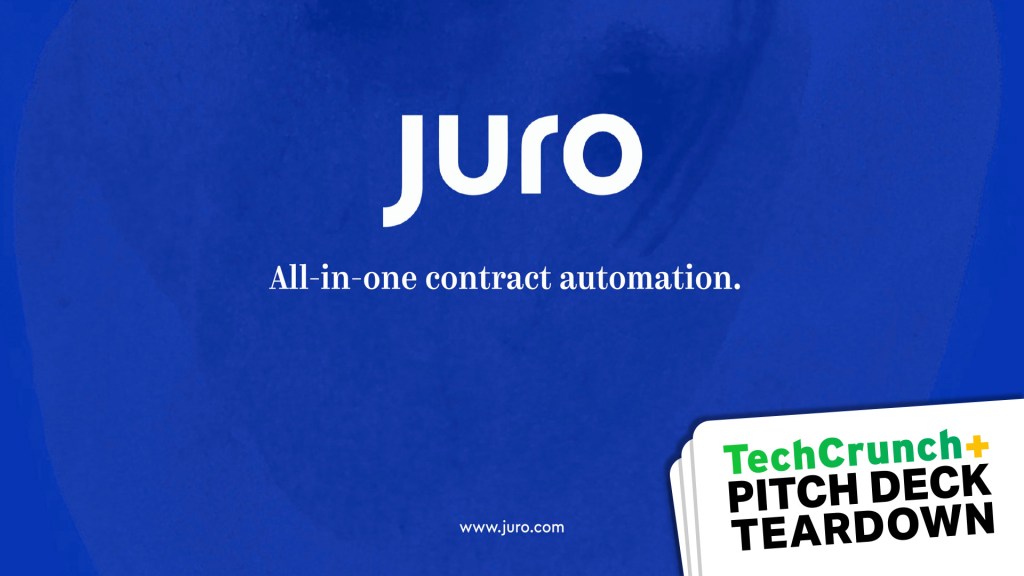






























Comment